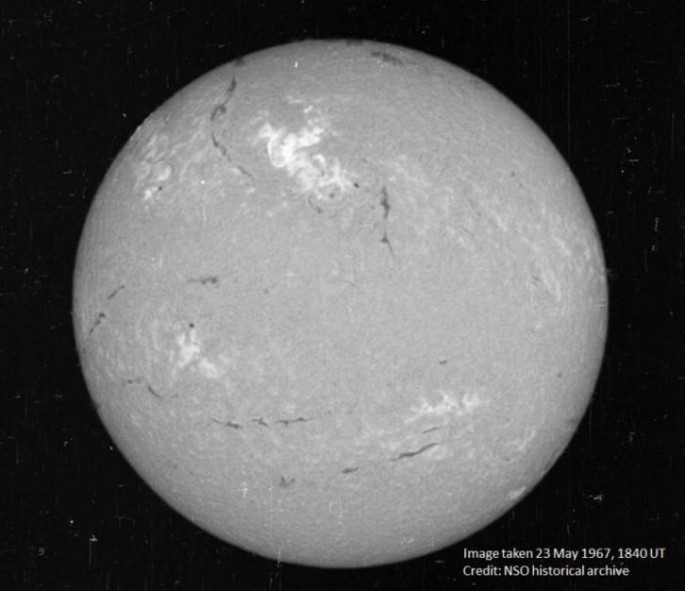The United States and the former Soviet Union came perilously close to a nuclear World War III on May 23, 1967 when a powerful solar storm that jammed communications led the Americans to believe the Russians had destroyed their ballistic missile early warning systems.
What prevented the nuclear missile exchange were U.S. Air Force weather forecasters sending urgent information about the solar storm disrupting radar and radio communications, said a paper accepted for publication in Space Weather, a journal of the American Geophysical Union.
This event, revealed for the first time in this study, is a classic example of how geoscience and space research are essential to U.S. national security.
On May 23, 1967, the Air Force prepared aircraft for war, thinking the nation's surveillance radars in polar regions were being jammed by the Soviet Union. Just in time, military space weather forecasters conveyed information about the solar storm's potential to disrupt radar and radio communications.
The planes remained on the ground and the U.S. avoided a potential nuclear weapon exchange with the Soviet Union.
The storm is a classic example of how geoscience and space research are essential to U.S. national security, said Delores Knipp, a space physicist at the University of Colorado in Boulder and lead author of the new study.
"Had it not been for the fact that we had invested very early on in solar and geomagnetic storm observations and forecasting, the impact (of the storm) likely would have been much greater," said Knipp. "This was a lesson learned in how important it is to be prepared."
On May 18, 1967, an unusually large group of sunspots with intense magnetic fields appeared in one region of the sun. By May 23, observers and forecasters saw the sun was active and likely to produce a major flare.
Observatories in New Mexico and Colorado saw a flare visible to the naked eye while a solar radio observatory in Massachusetts reported the sun was emitting unprecedented levels of radio waves.
As the solar flare event unfolded on May 23, radars at all three Ballistic Missile Early Warning System (BMEWS) sites in the far Northern Hemisphere were disrupted. These radars, designed to detect incoming Soviet missiles, appeared to be jammed.
Any attack on these stations - including jamming their radar capabilities -- was considered an act of war by the U.S.
NORAD learned the three BMEWS sites were in sunlight and could receive radio emissions coming from the sun. These facts suggested the radars were being jammed by the sun, not the Soviet Union. As solar radio emissions waned, the jamming also waned, further suggesting the sun was to blame.



























